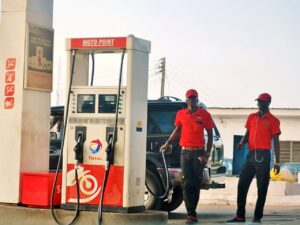[imagesource: Mike Hutchings/Reuters ]
Welcome to alert level 3, South Africa.
Booze sales, a 12-hour exercise window, no national curfew, and some other freedoms return.
It’s still a big no on the tobacco sales front, although many of the industry’s giants are now taking legal action.
The drop in alert level is welcomed, of course, but President Ramaphosa has admitted that some of the scientists responsible for advising the government’s response actually recommended that South Africa could move straight to alert level 1.
Those scientists believe the lockdown had become a “blunt instrument” in curbing the spread of the coronavirus, with reporting below via News24:
The president was speaking to a group of editors in a virtual forum with the South African National Editors’ Forum [SANEF] on Sunday.
“They [scientists] also said once we went through Level 5 and Level 4, they also said the lockdown has served its purpose. In fact what they were also advising was that you could quite easily go to Level 1,” Ramaphosa said.
He said scientists had advised that “the lockdown has become a blunt instrument” and had served its purpose. Government was advised to rely on other tools to curb the spread of Covid-19 infections, such as promoting social distancing, wearing of masks and hygiene.
Despite that advice, Ramaphosa said the government also took heed of what the World Health Organisation (WHO) recommended, which stated that “countries should ease lockdowns gradually and slowly and do so as the infection rate goes down”.
A combination of the scientific advice and the WHO advice led to the National Coronavirus Command Council (NCCC) deciding to “take the middle road”, culminating in the decision to drop to alert level 3 today:
“Rather than rush quickly to Level 1, as advised through scientists, we said, let’s go to Level 3 and gradually move to Level 2. This will also help give us time to be more ready throughout the country…” Ramaphosa said.
Still, with those scientists having the ear of government, we may be closer to alert level 1 than many thought, at least in certain parts of the country that aren’t considered hotspots.
On that front, Ramaphosa did admit that enforcing different alert levels at the same time would prove tricky:
“Originally, the intention was to place hotspot areas at a higher level than other areas, but it became evident that this would prove impractical and undermine efforts to reopen the economy,” Ramaphosa said.
He used Ekhuruleni as an example of how, if it was left at Level 4 of the lockdown, it would have been impossible for people from the rest of the province to travel to that area for work.
“Having different areas on different levels will simply disrupt supply chains, create a multiplicity of regulations to enforce and even increase the movement between hotspots and other areas,” he said.
That doesn’t mean the good people of the Western Cape should let down their guard, because the threat of a return to alert level 4 remains, and our numbers continue to rise at an alarming rate.
You can watch Ramaphosa’s full interview with a group of editors from SANEF below:
[source:news24]





